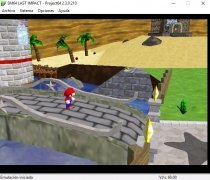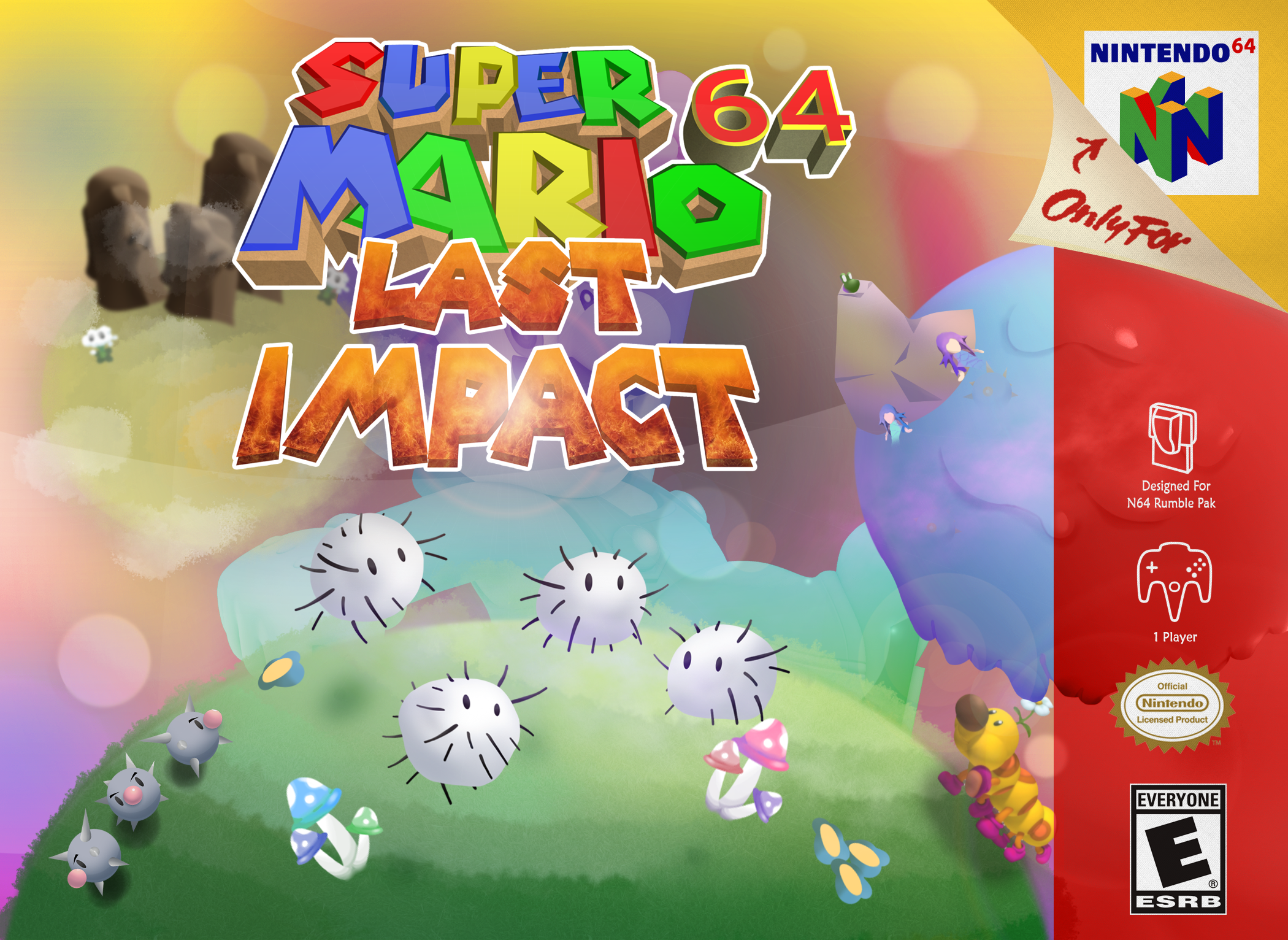
- Super mario 64 last impact d software#
- Super mario 64 last impact d series#
- Super mario 64 last impact d free#
Super mario 64 last impact d free#
“Because we were making games with no precedent and no model, we had no restraints in terms of process and were free to think however we liked about issues,” Takashi Tezuka, Senior Officer of Nintendo Entertainment Planning & Development Division (Nintendo EPD) and Assistant Director on Super Mario 64, told The Washington Post last September. That’s kind-of how Nintendo made their games at the time - now they’re a bit more organised.” “We were all just throwing stuff at a wall and seeing what would stick, basically. “When I was doing it Miyamoto-san walked past and said ‘ooh that’s cool, why don’t we put it in Mario 64?’ It was really a thing that just happened,” Goddard remembers. He wanted to see if the camera could detect him moving, sticking ping-pong balls to his face to be tracked on-screen, and his experiments caught the attention of Miyamoto. Nintendo collaborated with Silicon Graphics Inc on the hardware for what became the Nintendo 64 and Goddard, working in Nintendo EAD’s Research and Development department at the time, remembers receiving an exciting “Indy” workstation to experiment with, complete with a webcam. “You could basically come up with any idea and it would be new, so the world was your oyster,” Goddard says. However, 3D games were relatively rare at the time, which gave Goddard and Nintendo lots of freedom. Goddard moved over to Japan to work with Nintendo, aged just 19, and says that making enjoyable 3D games for the SNES that ran smoothly was challenging. “Within a year of starting at Argonaut, we started talking to Nintendo about the potential of doing 3D on stuff like the NES.”Īrgonaut realised that more powerful hardware would be needed and subsequently designed the Super FX 3D chip for the SNES to facilitate the creation of games like Star Fox. “I was really interested in 3D,” Goddard says. Argonaut Games had produced early 3D games like Starglider, released in 1986, and partnered with Nintendo after commissioning designer Dylan Cuthbert to reverse-engineer the handheld Game Boy console to produce a 3D game demo, eventually released as X in 1992. Goddard left school when he was 16 and got his first job working with the now-defunct British development studio Argonaut Games in London. The man responsible for this iconic intro is Giles Goddard, CEO of the Kyoto-based studio Chuhai Labs and one of Nintendo’s first western employees. However, there’s something unusual and delightful about this innocuous title screen: Mario’s face can be twisted and turned like Play-Doh before springing back into its original shape like a rubber band. When you boot up Mario 64, you’re greeted with a cheerful “hello” from the moustachioed plumber himself, grinning at you against a dark blue background. However, to properly tell the story of how Super Mario 64 changed everything, you have to start at the beginning. And it kinda kicked the butt of everything on the N64 after it.”ĭirected by the legendary designer and Mario creator Shigeru Miyamoto, the impact of Super Mario 64 continues to be felt in many games created over two decades later. “The industry hadn't really figured out 3D platforming yet, and here it was, a masterwork that set the standard.
Super mario 64 last impact d software#
It defined the 3D platformer as a genre,” says veteran designer, Co-Founder of id Software and Senior Creative Director for VR developers Resolution Games Tom Hall. “Apart from camera criticism, everyone thought it was amazing.
Super mario 64 last impact d series#
Add in a camera-relative control scheme which was unparalleled at the time, an iconic soundtrack by series veteran Koji Kondo and open-ended, exploration-focused level design, and game developers were stunned. Mario himself was a smoothly-animated marvel, steered around with the analogue stick in the middle of the unusual N64 controller. Critics and players alike were astonished by the platformer, which took the world-famous plumber out of the second dimension and popped him into a vibrant, colourful 3D world.

On June 23rd 1996, twenty-five years ago, Super Mario 64 was released in Japan as a launch title for Nintendo’s N64 console. “It was like an epiphany, that’s what I would say: Mario 64 was an epiphany.” To see this content please enable targeting cookies. Tim Schafer, renowned developer and President and CEO of Double Fine Productions, takes a second to think: how exactly did Super Mario 64 impact him when he first played it?

“What’s the right word? It was like a milestone, or a watershed - what am I looking for here…”

Twenty-five years on, we catch up with the developers inspired by Miyamoto's revolutionary platformer.


 0 kommentar(er)
0 kommentar(er)
